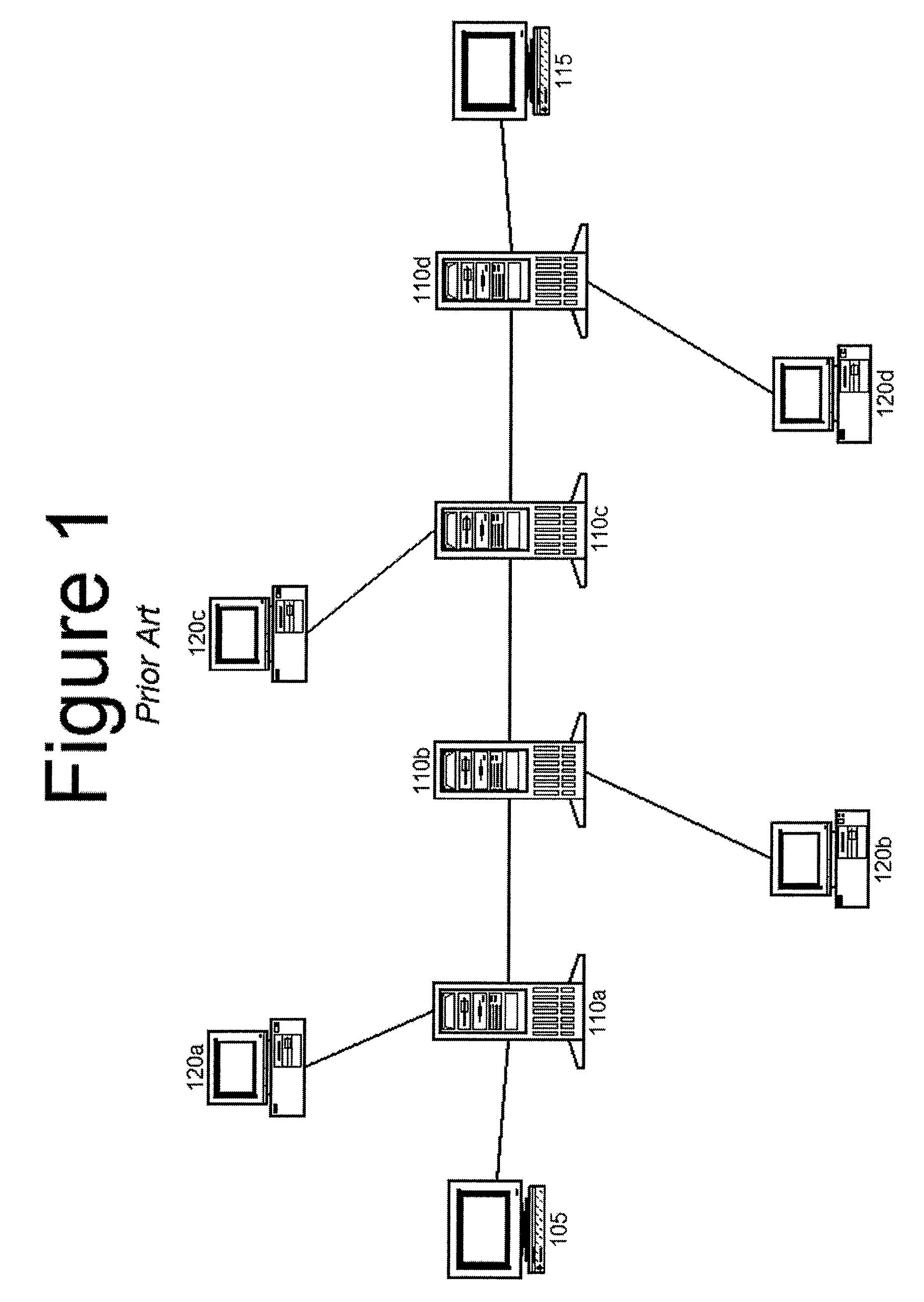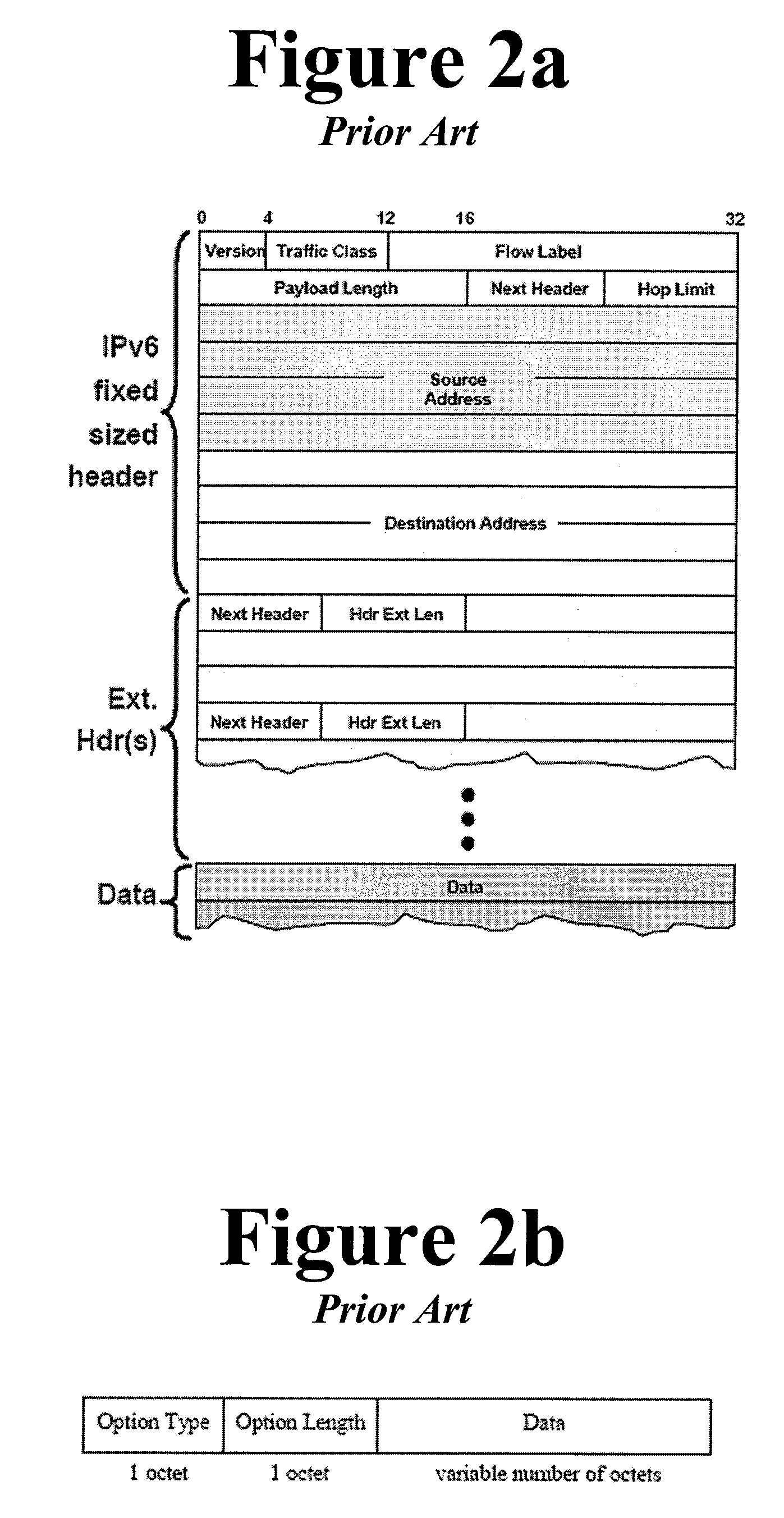EFFICIENT PERFORMANCE MONITORING USING IPv6 CAPABILITIES
a performance monitoring and ipv6 technology, applied in data switching networks, frequency-division multiplexes, instruments, etc., can solve problems such as performance degradation, unreliable absolute performance indicators, and high variability in processing delays at routers along the path, and the internet control message protocol (icmp) based delay measurement techniques employed by ping and tracerout are known to be unreliable indicators of absolute performan
- Summary
- Abstract
- Description
- Claims
- Application Information
AI Technical Summary
Benefits of technology
Problems solved by technology
Method used
Image
Examples
Embodiment Construction
[0017]The present invention provides a process for utilizing the IPv6 feature of hop-by-hop extension headers to improve monitoring and maintenance of IPv6 networks. FIG. 1 illustrates a simple data network 100. Source client 105 sends a packet to destination client 115 by utilizing routers 110a-d. Source client 105 addresses a data packet with the destination address being the network address of destination client 115. Router 110a receives the packet and checks the destination address. After determining it is not the final destination of the data packet, router 110a forwards the packet to router 100b. This process continues through routers 110c and 110d until the packet reaches destination client 115.
[0018]Clients 120a-d are also operably connected to network 100, and can be sending data packets throughout the network as well. These additional data flows can result in any individual router 110a-d being busy when receiving the packet originating from source client 105. This results ...
PUM
 Login to View More
Login to View More Abstract
Description
Claims
Application Information
 Login to View More
Login to View More - R&D
- Intellectual Property
- Life Sciences
- Materials
- Tech Scout
- Unparalleled Data Quality
- Higher Quality Content
- 60% Fewer Hallucinations
Browse by: Latest US Patents, China's latest patents, Technical Efficacy Thesaurus, Application Domain, Technology Topic, Popular Technical Reports.
© 2025 PatSnap. All rights reserved.Legal|Privacy policy|Modern Slavery Act Transparency Statement|Sitemap|About US| Contact US: help@patsnap.com



